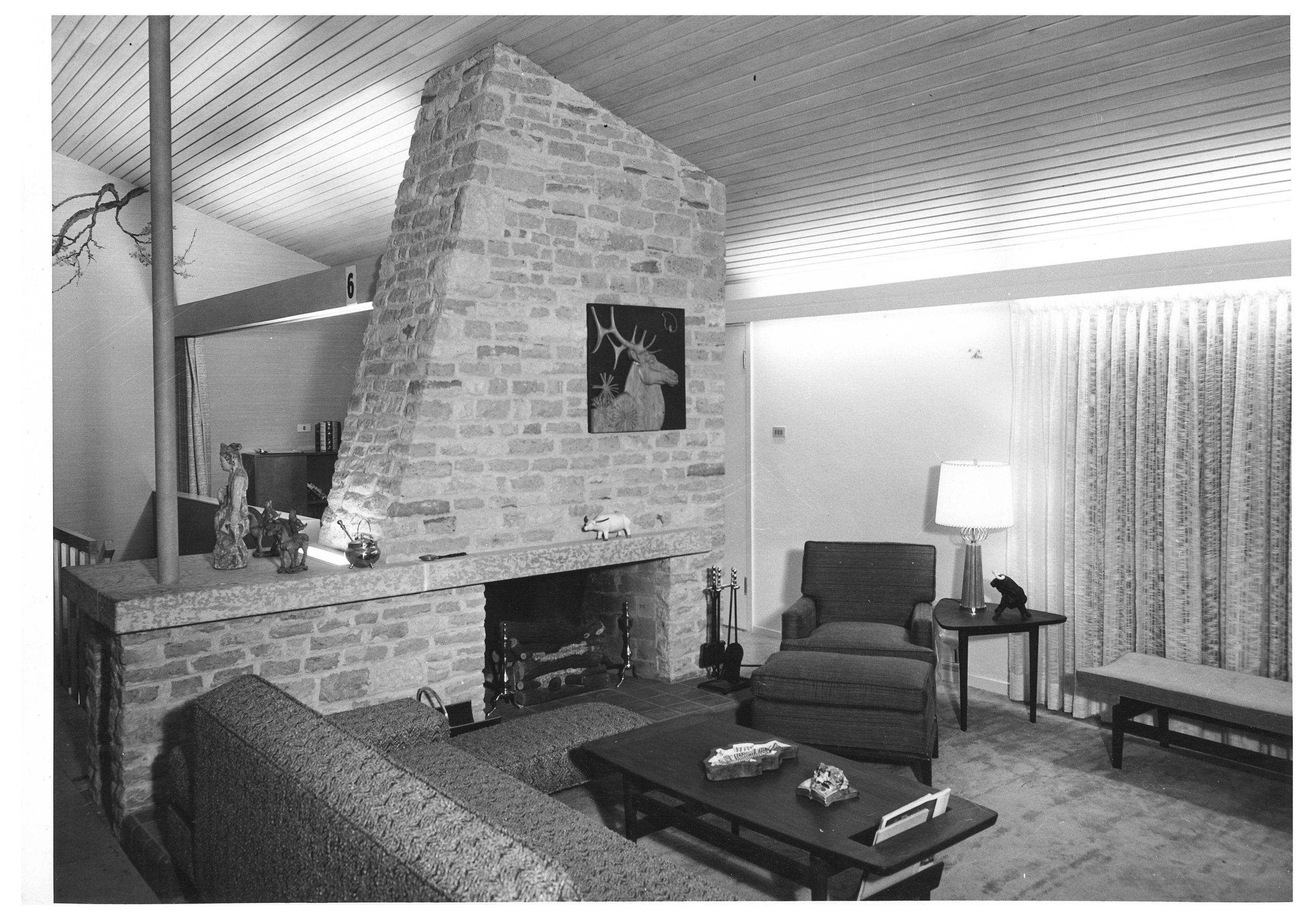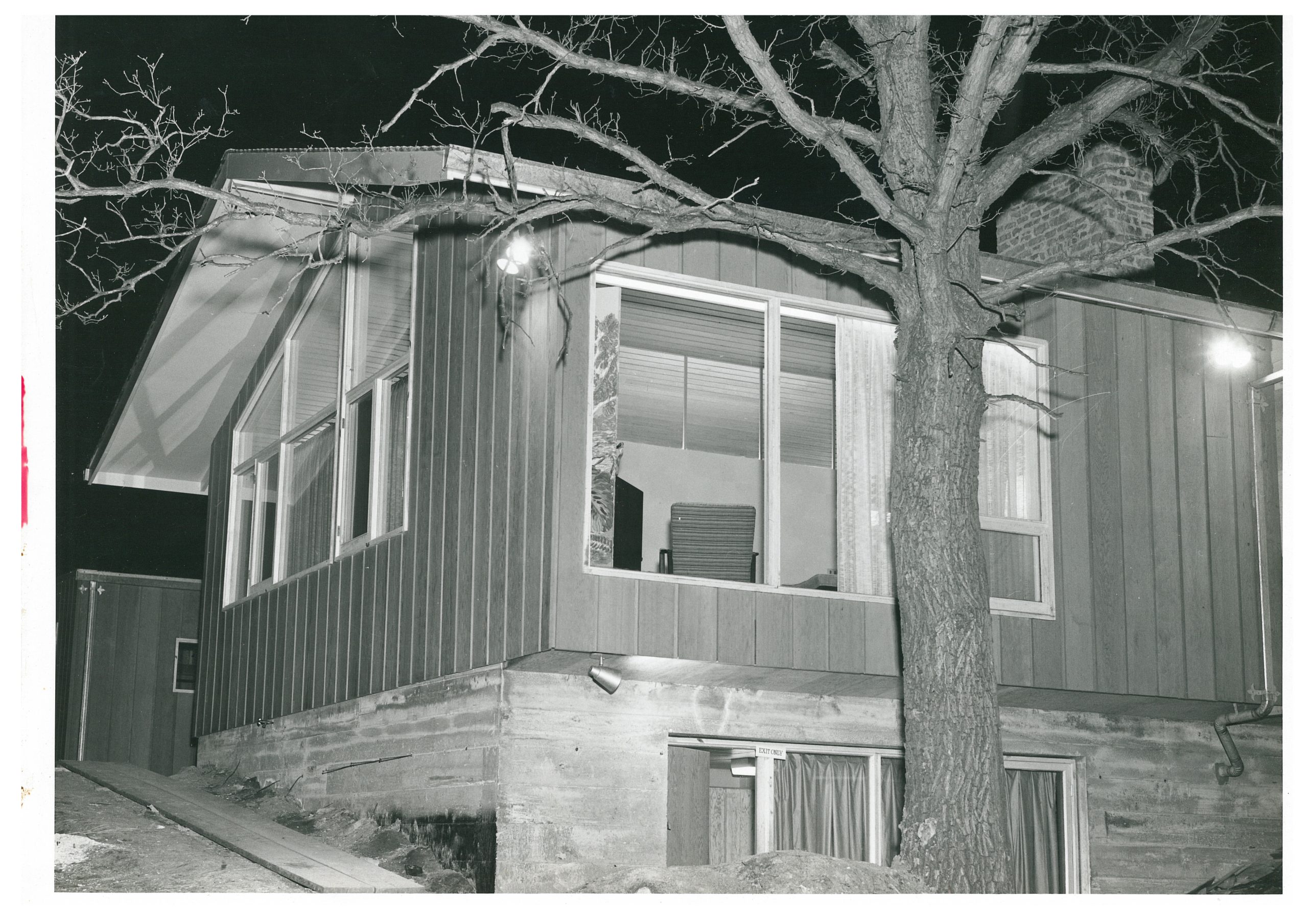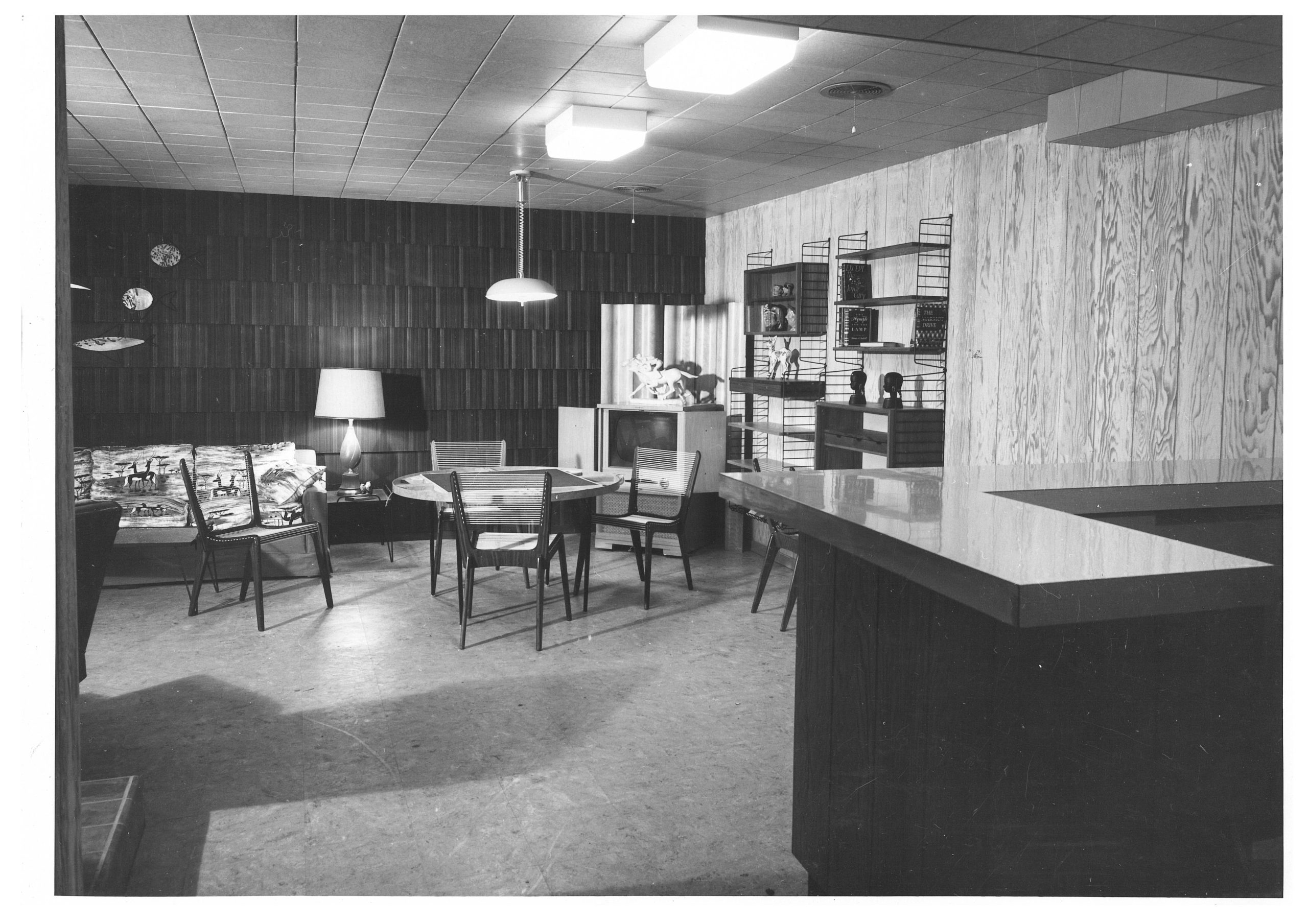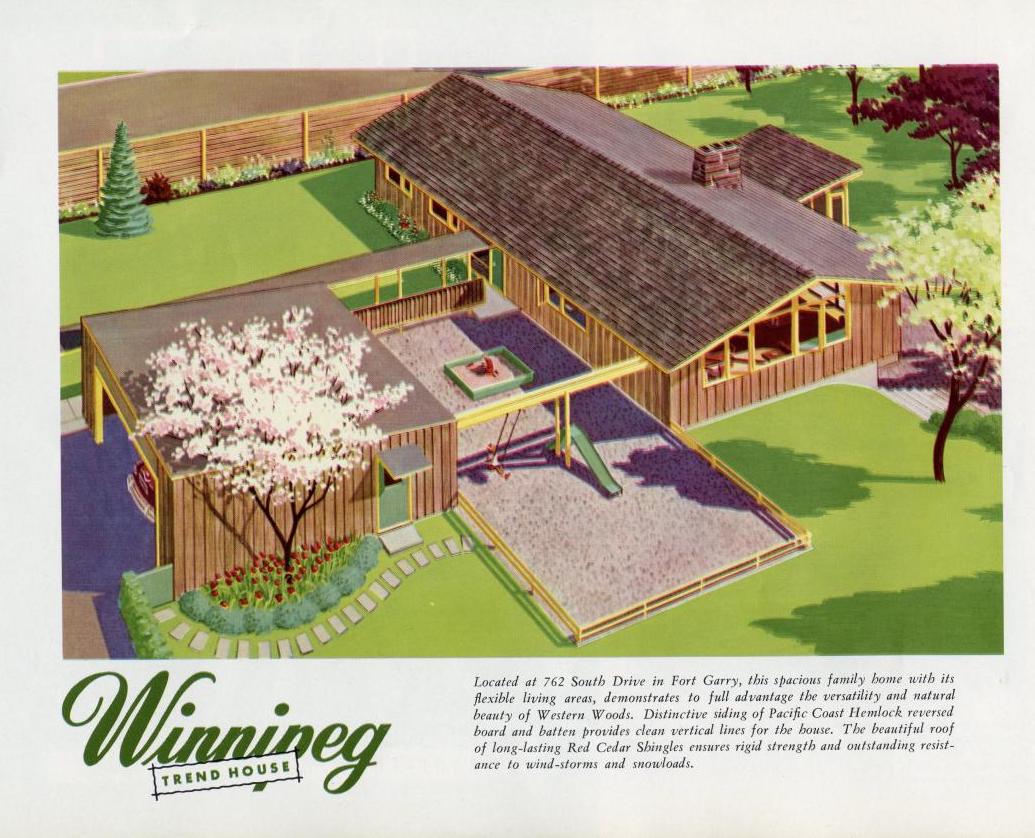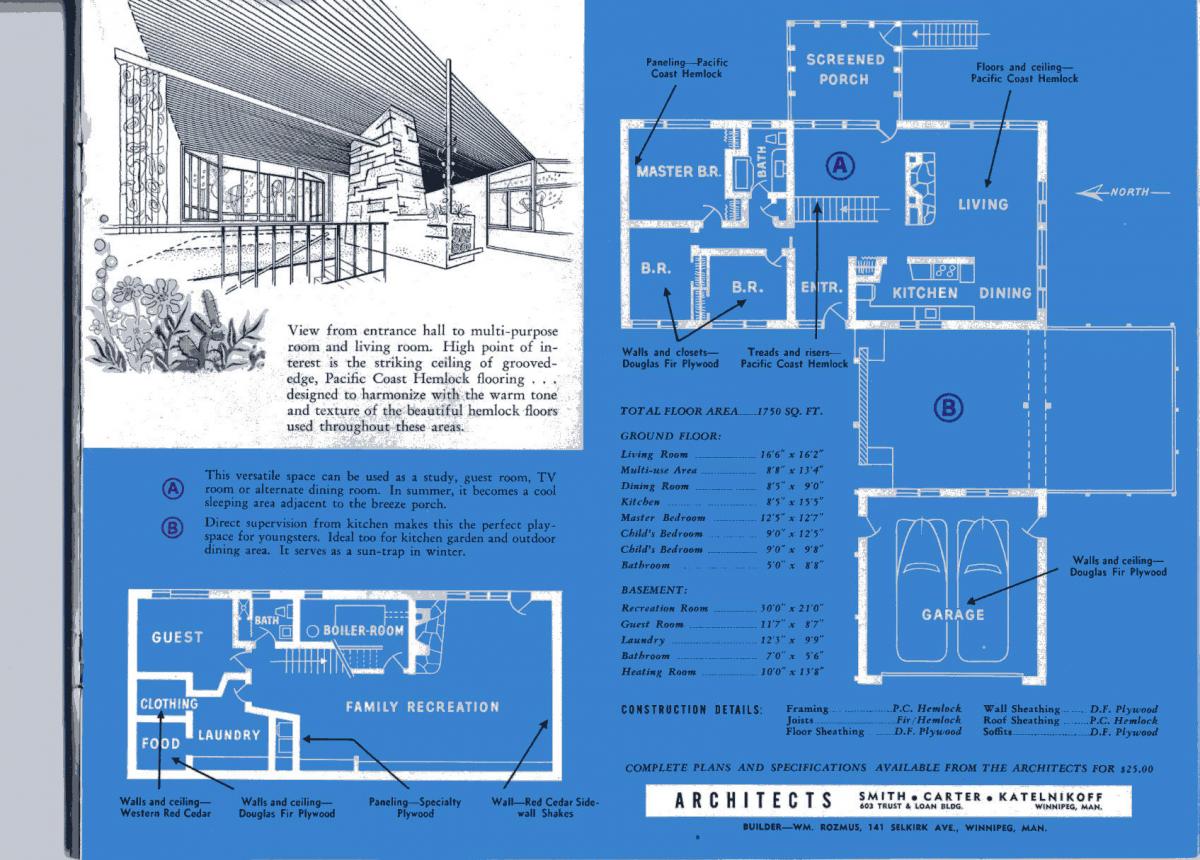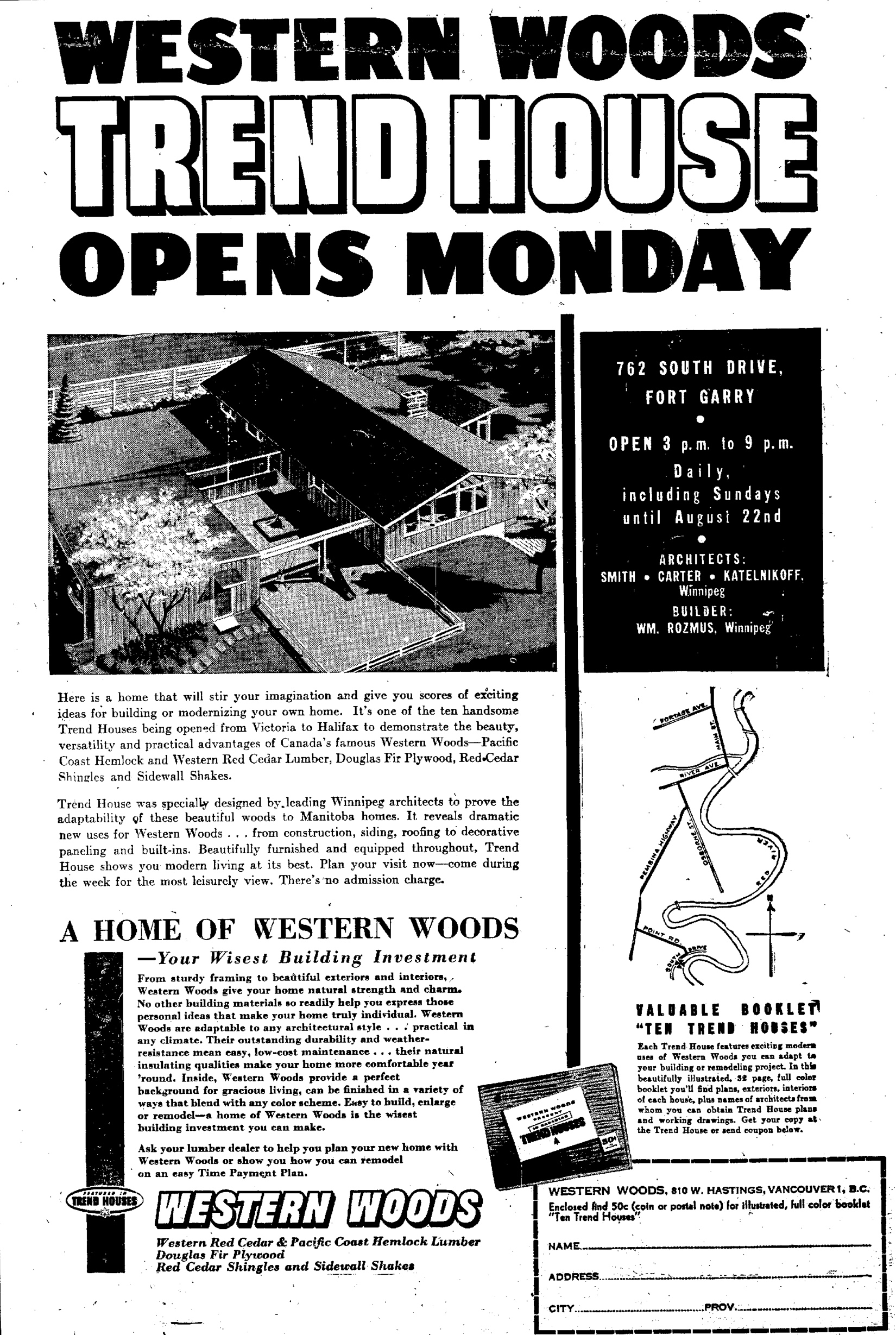Buildings
762 South Drive
| Constructed: | 1953–54 |
|---|---|
| Architects: | Walter L. Katelnikoff |
| Contractors: | William Rozmus |
More Information
762 South Drive in Winnipeg’s Fort Garry area was built in 1953 as the Winnipeg Trend House. As such it was one of ten model homes opened across Canada in 1954 year by Vancouver company Western Woods. Other Canadian trend homes that were part of this program were located in Victoria, Vancouver, Calgary, Edmonton, Regina, London, Montreal and Halifax. The Winnipeg example was designed by Walter L. Katelnikoff, a partner in the prominent local firm of Smith, Carter and Katelnikoff and a 1944 graduate of the University of Manitoba’s School of Architecture. It was constructed by William Rozmus.
Period advertisements boasted that the home would “stir your imagination and give you scores of exciting ideas for building or modernizing your own home” and “demonstrate the beauty, versatility and practical advantages of Canada's famous Western Woods—Pacific Coast Hemlock and Western Red Cedar Lumber, Douglas Fir Plywood, Red-Cedar Shingles and Sidewall Shakes.” The home also demonstrated the use of other new materials, including Dominion Inlaid Linoleum, with this company touting their involvement in the demonstration home in the local press. In the summer of 1954 it was estimated by a representative of the B.C. Coast Woods trade extension bureau that in its run as a public demonstration home (from May to August of 1954) 762 South Drive was likely to receive 54,000 visitors, making it “the most successful home demonstration in the city's history.” The home's design is modernist in character. A unique element is the overall footprint, which created a sun-trap play area between the garage and the kitchen, allowing for easy supervision of children.
South Drive is a prominent residential route in Winnipeg’s Crescent Park and Wildwood Park neighbourhoods. The street, which was previously located in the Rural Municipality of Fort Garry, follows the gently snaking curves of the adjacent Red River. Beginning at the southeastern end of the Wildwood peninsula, the street continues north of St. John’s Ravenscourt – a private school located in this area since 1934 – to become North Drive. At this end of the road stands Wildwood Park, a residential district unique in its arrangement of homes and roadways: rather than fronting onto streets, area homes in the area (set on ten bays) face park-like spaces traversed by sidewalks, with vehicular access via rear alleyways. The scheme, somewhat utopian in ambition, is specifically modelled on Radburn, New Jersey, an area developed according to similar principles in the late 1920s and 1930s. Besides hosting the Winnipeg Trend Home, South Drive is distinguished as the site of a large number of architect-designed residences. Many of these buildings were themselves the homes of notable local architects who were drawn to the area for its scenic, park-like ambience, proximity to the University of Manitoba and historically affordable property costs, the latter fact influenced by damage to the area during the Winnipeg flood of 1950. Among these examples is the Gerson Residence (545 South Drive), originally designed by and home to University of Manitoba professor, Wolfgang Gerson, a German-born, London-trained architect among the pioneers of modern architectural teaching in Manitoba. Nearby stands 544 South Drive (from 1957), the modernist home of Dennis Carter, prominent local architect and founder of Smith Carter – a pioneering firm in the Canadian embrace of modern architecture. At 740 South Drive is the 1956 home of University of Manitoba Dean of Architecture John A. Russell, designed by Russell and Roy Sellors. Sellor’s own home, from 1954, is also located along South Drive, at 717 South Drive. Both residences are distinguished by their mid-century modernist design, featuring vertical wood cladding and spare, elegant detail. Further south, at the intersection of Kebir Place and South Drive, stands 806 Kebir Place, a streamlined, boxy form that was once the Snider Residence. Home of local architect Kenneth Snider, the house (from 1957) received extensive coverage in the periodical Canadian Homes and Gardens. Largely hidden from view at the north end of the street is the dramatic modernist split-level home of architect Allan Waisman, 474 South Drive in Fort Garry. Again bearing vertical wood cladding, the house’s impression is dominated by a projecting porch and tall, airy staircase, creating a temple-like quality.
Design Characteristics
| Size: | One storey 2,250 square feet |
|---|---|
| Suburb: | Wildwood |
- U-shaped plan
- Semi-enclosed courtyard area
- Shallow gable roof
